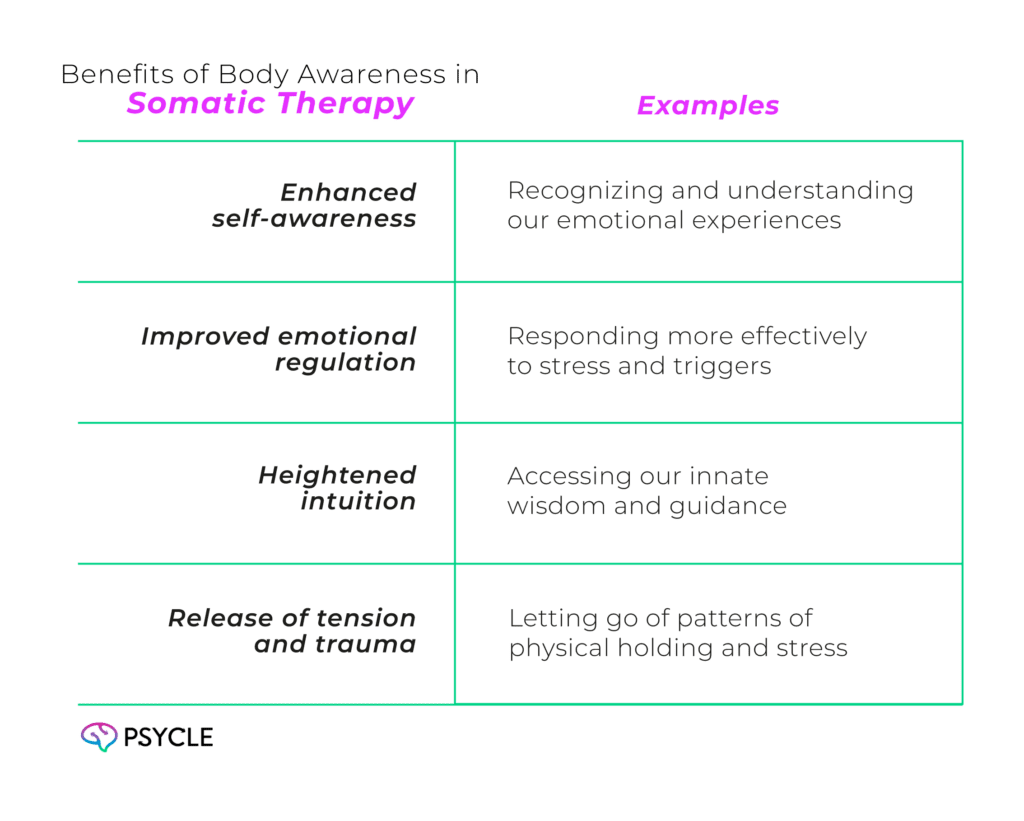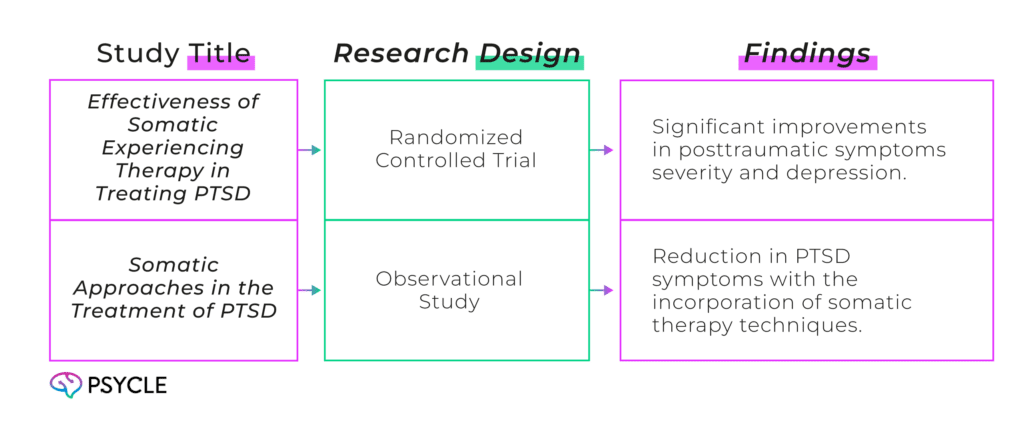Somatic therapy, a holistic treatment approach, focuses on the mind-body connection to address trauma, stress, and emotional burdens. By integrating mindfulness, movement, and breathing strategies, somatic therapy aims to enhance self-awareness, develop empathy, and promote overall healing and improved mental health.
Key Takeaways
- Somatic therapy is an alternative mental health treatment.
- It focuses on the interplay of the body, mind, emotions, and social context.
- Techniques such as mindfulness, movement, and breathing strategies are used.
- Somatic therapy helps individuals develop self-awareness and understand their relationships with others.
- It promotes overall healing and improved mental health.
Healing Focus: Trauma, Stress, and Emotional Burdens
Somatic therapy is a powerful therapeutic approach that places its focus on trauma, stress, and emotional burdens. It offers a safe and nurturing space for individuals to explore and process the deep-seated experiences and emotions that reside within their bodies.
By actively addressing these manifestations, somatic therapy enables the release of pent-up tension, trauma, and stress, leading to profound emotional healing and relief.
The primary goal of somatic therapy is to modify trauma-related responses in such a way that they no longer trigger distress or hinder overall well-being.
Body Awareness: Cultivating a Deeper Understanding of Physical Signals
In somatic therapy, cultivating body awareness is a key element on the path to healing and self-discovery. By developing a deeper understanding of our physical signals and sensations, we gain valuable insight into our emotional experiences and overall well-being.
Through the practice of body awareness, we become attuned to the subtle cues that our bodies provide, guiding us toward a more balanced and authentic existence.
When we pay attention to physical signals, such as tightness in our muscles, knots in our stomach, or a racing heartbeat, we can begin to decode the messages our bodies are sending us. These signals often represent deeper emotional patterns or experiences that may be buried within our physiology.
By cultivating body awareness, we allow ourselves to uncover these patterns, leading to a greater understanding of ourselves and the ability to address our needs more effectively.
Body awareness also helps us to detect areas of tension or holding within our bodies. These patterns of physical tightness often correspond to unresolved emotional experiences or trauma. Through somatic therapy, we can explore and release these tensions, allowing for a deeper sense of relaxation and well-being.
Unlocking Inner Wisdom through Body Awareness
Developing body awareness enables us to tap into our innate wisdom and intuition. By being present in our bodies and attuned to physical sensations, we can access valuable information that may not be readily available through conscious thought alone.
By paying attention to our physical signals, we can gain insight into our emotions, needs, and desires. For example, a clenching sensation in our gut may be a sign of stress or unease, prompting us to take a step back and examine what may be causing these feelings. Conversely, a feeling of lightness and ease may indicate alignment with our true desires and actions.
Integrating Body Awareness into Daily Life
Building body awareness is not limited to the therapy room—it is a practice that can be incorporated into our daily lives.
By engaging in activities that promote body awareness, such as yoga, meditation, or simply taking a mindful walk in nature, we can strengthen our connection to our bodies and deepen our understanding of our physical signals.
Through regular practice, body awareness becomes second nature, allowing us to respond more intuitively and authentically to our physical and emotional needs. It is a lifelong journey of self-discovery and self-care, empowering us to live with greater awareness and alignment.

Benefits Uncovered: Improved Mental Health and Reduced Tension
Somatic therapy offers a wide range of benefits through techniques such as mindfulness, movement, and breathing strategies, somatic therapy helps individuals relieve physical tension stored in the body, promoting a profound sense of ease and relaxation.
By focusing on the mind-body connection, somatic therapy empowers individuals to better regulate their emotions, enhance self-awareness, and develop healthier coping mechanisms. This holistic approach to healing offers lasting results by addressing both the physical and emotional aspects of well-being.
As a result, individuals who undergo somatic therapy often experience a significant improvement in their overall mental health and a reduction in the tension they carry.
Therapy Process: Personalized Sessions Fostering Recovery
Somatic therapy follows a personalized approach to healing, with each session tailored to the individual’s unique needs. The primary goal of somatic therapy is to foster recovery by addressing trauma, stress, and emotional burdens through a variety of therapeutic techniques.
The therapy process begins by creating a safe and supportive environment where the individual feels comfortable exploring their experiences, emotions, and bodily sensations.
The therapist actively engages in dialogue with the client, guiding them in uncovering and processing deep-seated trauma, stress, and emotional burdens.
The therapeutic techniques used in somatic therapy may include talk therapy, expressive techniques, body movement, and other somatic interventions. This combination of approaches allows individuals to tap into their innate healing abilities and find relief from emotional pain.
Somatic therapy empowers individuals to reconnect with their bodies, explore their emotions, and develop healthier coping strategies. The therapist plays a vital role in creating a safe space for individuals to share their experiences and provides guidance throughout the healing journey.
Somatic therapy prioritizes the individual’s healing journey. By addressing trauma, stress, and emotional burdens, individuals can experience profound recovery and enhanced well-being through this holistic approach.
Who It’s For: Healing Trauma and Enhancing Wellbeing
Somatic therapy is an effective treatment option for individuals who have experienced trauma or are seeking to enhance their overall well-being. It is particularly beneficial for those struggling with post-traumatic stress disorder (PTSD), grief and loss, addiction, anxiety, depression, and other mental health issues.
By addressing the mind, body, and emotions, somatic therapy provides a holistic approach to healing. It recognizes that trauma and emotional burdens are not solely experienced in the mind but also in the body.
Somatic therapy is suitable for individuals seeking support and growth in various areas of their lives. Whether someone is looking to heal from past trauma or simply enhance their overall sense of well-being, this therapy can offer valuable insights and tools for self-discovery and personal growth.
Common Techniques: Mindfulness, Movement, Breathing Strategies, Body Awareness, Grounding
Somatic therapy incorporates a variety of common techniques that serve as powerful tools for facilitating healing and enhancing well-being. These techniques include mindfulness, movement, and breathing strategies, each playing a unique role in the somatic healing process.
Mindfulness
By practicing mindfulness, individuals learn to become more attuned to their inner experiences, developing a deep sense of self-awareness. This technique encourages individuals to observe their bodily sensations without judgment, allowing them to tap into the wisdom of their bodies and gain valuable insights into their emotional states.
Movement
Movement is a powerful tool for somatic healing, as it allows individuals to physically express and release emotional energy trapped in the body. Gentle exercises, yoga, or dance can promote the flow of energy, facilitate emotional processing, and support the integration of mind and body.
Breathing Strategies
The breath is an essential component of somatic therapy techniques. Deep abdominal breathing calms the nervous system, increasing relaxation and reducing stress. Focused breathing allows individuals to ground themselves in the present moment and activate the body’s natural relaxation response.
Body Awareness
Body awareness practices in somatic therapy aim to help individuals recognize and release areas of tension and holding patterns within their bodies. Through body scans, mindful movements, and gentle touch, individuals cultivate a deeper understanding of physical sensations, emotions, and the interplay between the two.
By fostering body awareness, somatic therapy enhances individuals’ ability to respond to their physical and emotional needs effectively.
Grounding
Grounding techniques facilitate individuals’ connection with the present moment and their surroundings. These techniques involve bringing attention to the senses, such as feeling the weight of the body, noticing the contact points with the ground, or observing the environment’s sights and sounds.
Grounding exercises create a sense of safety, stability, and centeredness, allowing individuals to feel more grounded and present in their bodies.
By incorporating these common techniques, somatic therapy provides individuals with practical tools to reconnect with their bodies, access deep healing, and cultivate overall well-being.
Evidence-Based Research: Positive Results for PTSD and Trauma
While research on somatic therapy is still limited, the available studies have shown promising results in treating individuals with PTSD and trauma. These evidence-based research findings highlight the potential effectiveness of somatic therapy in addressing trauma-related conditions and promoting healing.
One notable study conducted a randomized controlled trial to evaluate the effectiveness of somatic experiencing (SE) therapy in alleviating posttraumatic symptoms. The study found significant improvements in the severity of post-traumatic symptoms and depression among the participants who received somatic experiencing therapy.
Another study reviewed complementary somatic interventions, including somatic experiencing, meditation, and brain-spotting. The results indicate that the interventions were successful, especially somatic experiences.
It’s important to note that further research is still needed to build on these preliminary findings and expand the understanding of somatic therapy’s effectiveness.
However, these initial results help establish the basis for exploring somatic therapy as a viable option for individuals seeking trauma-focused care.

Note: The above table provides a summary of selected studies on somatic therapy for PTSD and trauma. More research is needed to validate these findings and further explore the potential benefits of somatic therapy in trauma-focused care.
Risks and Considerations: Misinterpretation, Retraumatization, Regression
While somatic therapy offers various benefits, like any therapy, it is important to be aware of the potential risks and considerations involved in the process. For both therapists and clients, understanding and addressing these risks can help ensure a safe and effective therapeutic experience.
Misinterpretation of Touch
In somatic therapy, touch can be an essential part of the therapeutic process, used to support individuals in connecting with their bodies and releasing tension. However, misinterpretation of touch can occur, potentially leading to discomfort or re-traumatization.
Therapists must maintain clear boundaries, communicate openly, and prioritize informed consent to mitigate the risk of misinterpretation.
Retraumatization
Individuals who have experienced trauma may be particularly vulnerable to retraumatization during somatic therapy. Revisiting and processing traumatic memories and sensations can evoke intense emotional responses and, if not carefully managed, may lead to further distress.
It is crucial for therapists to be attentive to their clients’ responses, monitor their emotional states, and employ appropriate grounding techniques to mitigate the risk of re-traumatization.
Regression
Regression, or reverting back to previous emotional or behavioral patterns, can also be a potential risk in somatic therapy. Exploring deep emotional experiences stored in the body may bring up unresolved issues or trigger regression in clients.
Therapists must maintain a supportive and non-judgmental environment, offering guidance and reassurance to help clients navigate challenging emotions while ensuring their progress is not hindered.
In somatic therapy, it is important for therapists to proceed with caution, particularly when treating individuals with a history of trauma. Open communication, clear boundaries, and informed consent are essential in maintaining a safe and ethical therapeutic environment.
Conclusion: Enhancing Healing Through Somatic Therapy
Somatic therapy offers a unique approach to healing by focusing on the mind-body connection. Somatic therapy is suitable for anyone seeking to heal trauma, reduce stress, and enhance their overall well-being.
Through personalized sessions and a range of techniques, somatic therapy fosters recovery, empowers individuals to reconnect with their bodies, and creates a pathway to healing and growth. Somatic therapy provides a holistic treatment approach that promotes overall wellbeing by addressing the interplay of the body, mind, emotions, and social context.
Whether you are seeking to heal from past traumas or simply enhance your overall well-being, somatic therapy offers a transformative journey toward healing and growth. By harnessing the power of the mind-body connection, you can embark on a path of self-discovery, self-healing, and self-empowerment.
FAQs
What Does Somatic Therapy Focus On?
Somatic therapy primarily targets trauma, stress, and emotional burdens. It provides a safe space for individuals to explore and process deeply painful experiences held in the body. The therapy aims to modify trauma-related responses so that they no longer trigger distress or hinder overall well-being.
How Does Somatic Therapy Cultivate Body Awareness?
Somatic therapy encourages individuals to develop a deeper understanding of their physical signals and sensations. By being attuned to bodily cues, individuals can gain insight into their emotional experiences, uncover patterns of tension or holding, and connect with their innate wisdom.
Who Can Benefit From Somatic Therapy?
Somatic therapy is beneficial for individuals who have experienced trauma or are seeking to enhance their overall well-being. It is often recommended for those struggling with post-traumatic stress disorder (PTSD), grief and loss, addiction, anxiety, depression, and other mental health issues.
What Are the Risks and Considerations of Somatic Therapy?
Risks associated with somatic therapy include misinterpretation of touch, retraumatization, and regression. Therapists must proceed with caution, particularly when treating individuals with a history of trauma. Open communication, clear boundaries, and informed consent are essential in maintaining a safe and ethical therapeutic environment.

